Meiosis: Sources of Genetic Variation (Cambridge (CIE) A Level Biology): Revision Note
Exam code: 9700
Meiosis: sources of genetic variation
Having genetically different offspring can be advantageous for natural selection
Meiosis has several mechanisms that increase the genetic diversity of gametes produced
Both crossing over and independent assortment (random orientation) result in different combinations of alleles in gametes
Crossing over
Crossing over is the process by which non-sister chromatids exchange alleles
Process:
During meiosis I homologous chromosomes pair up and are in very close proximity to each other
The non-sister chromatids can cross over and get entangled
These crossing points are called chiasmata
The entanglement places stress on the DNA molecules
As a result of this, a section of chromatid from one chromosome may break and rejoin with the chromatid from the other chromosome
This swapping of alleles is significant as it can result in a new combination of alleles on the two chromosomes
There is usually at least one, if not more, chiasmata present in each bivalent during meiosis
Crossing over is more likely to occur further down the chromosome away from the centromere
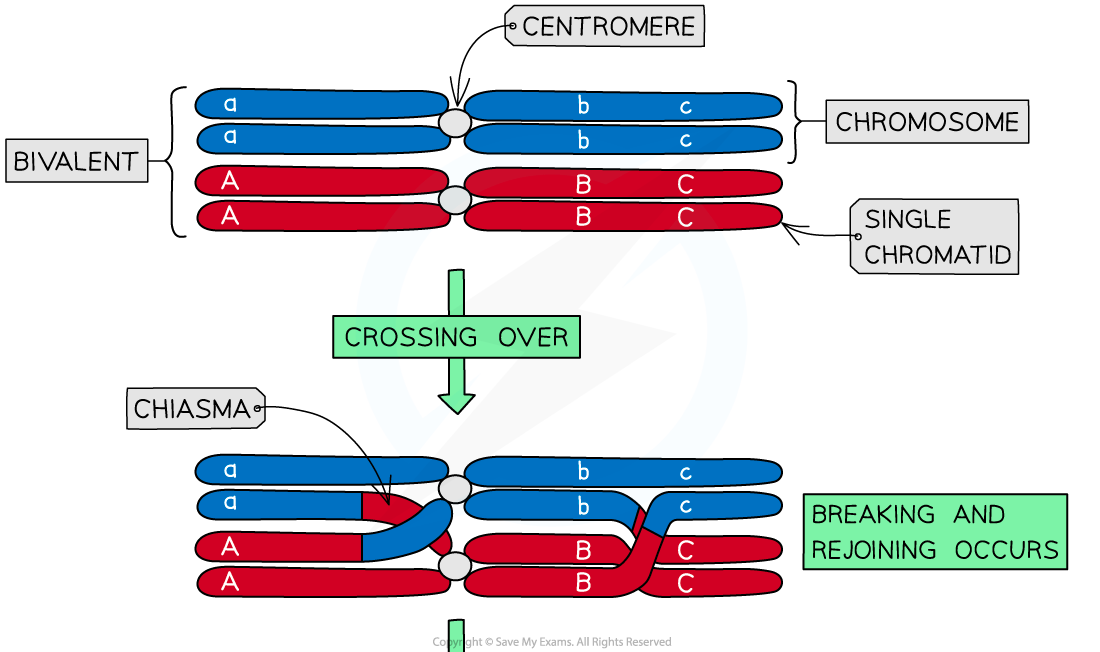
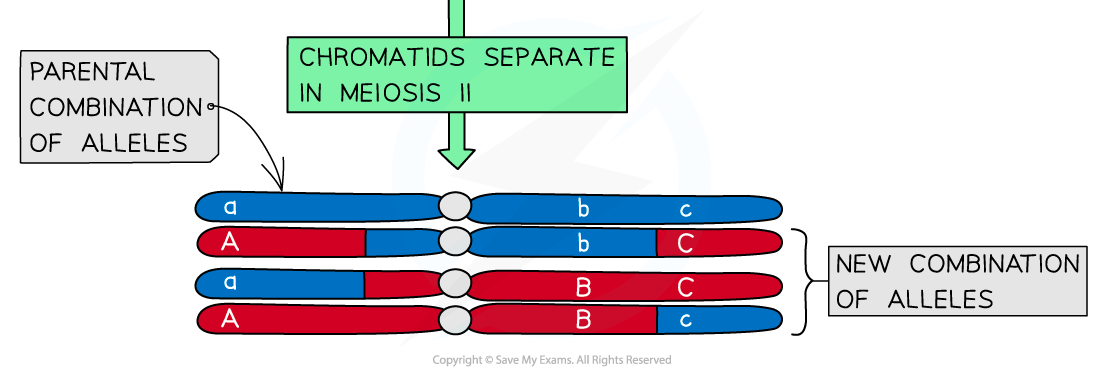
Independent assortment
Independent assortment is the production of different combinations of alleles in daughter cells due to the random alignment of homologous pairs along the equator of the spindle during metaphase I
The different combinations of chromosomes in daughter cells increases genetic variation between gametes
In prophase I homologous chromosomes pair up and in metaphase I they are pulled towards the equator of the spindle
Each pair can be arranged with either chromosome on top, this is completely random
The orientation of one homologous pair is independent (unaffected by the orientation of any other pair)
The homologous chromosomes are then separated and pulled apart to different poles
The combination of alleles that end up in each daughter cell depends on how the pairs of homologous chromosomes were lined up
To work out the number of different possible chromosome combinations the formula 2n can be used, where n corresponds to the number of chromosomes in a haploid cell
For humans this is 223 which calculates as 8 388 608 different combinations
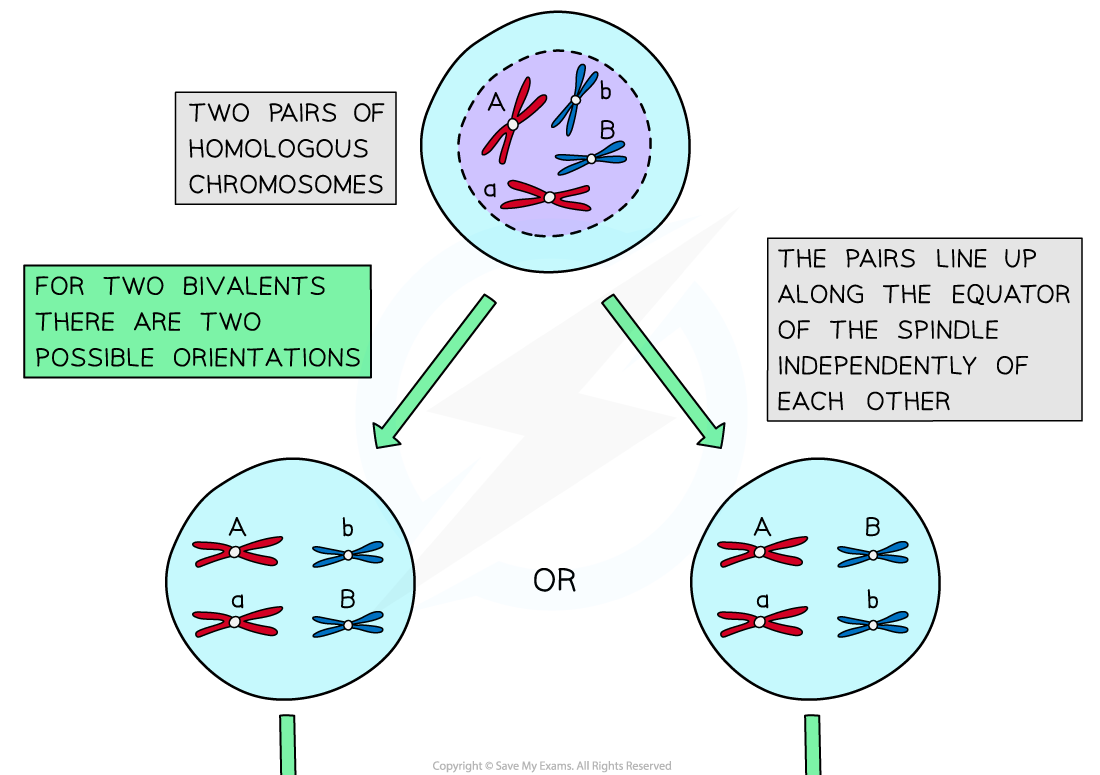
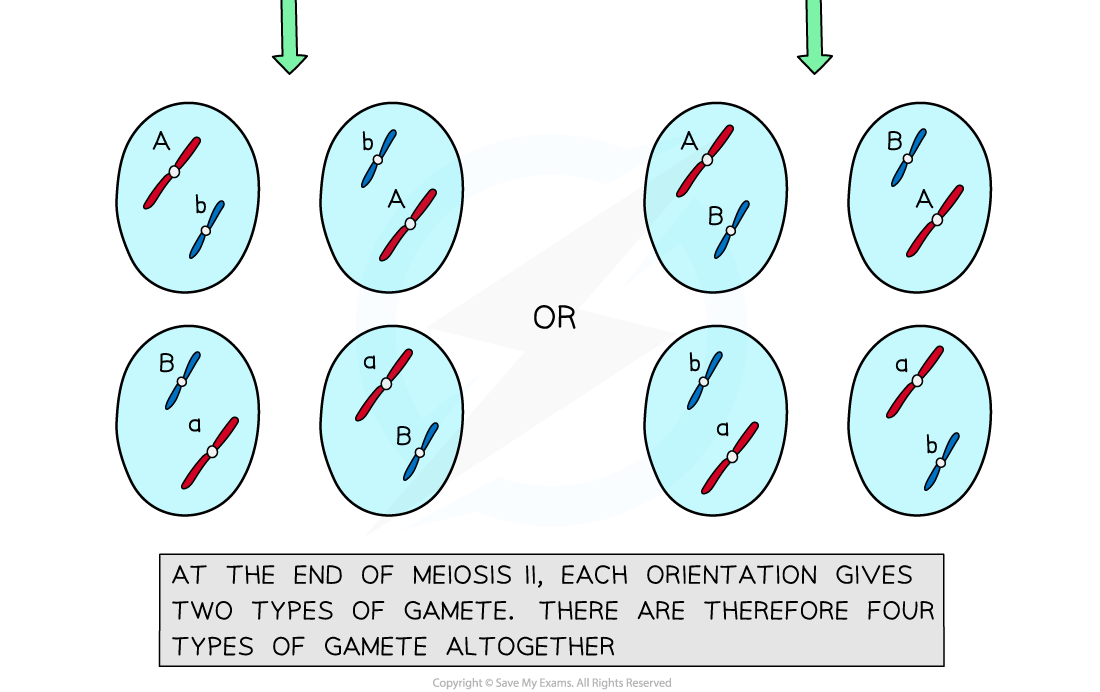
Examiner Tips and Tricks
Several sources of genetic variation have been outlined above. It is also worth remembering that genetic variation can occur on an even smaller scale than chromosomes: mutations can occur within genes. A random mutation that takes place during DNA replication can lead to the production of new alleles and increased genetic variation.
Fusion of gametes
Meiosis creates genetic variation between the gametes produced by an individual through crossing over and independent assortment
This means each gamete carries substantially different alleles
During fertilisation any male gamete can fuse with any female gamete to form a zygote
This random fusion of gametes at fertilisation creates genetic variation between zygotes as each will have a unique combination of alleles
There is an almost zero chance of individual organisms resulting from successive sexual reproduction being genetically identical
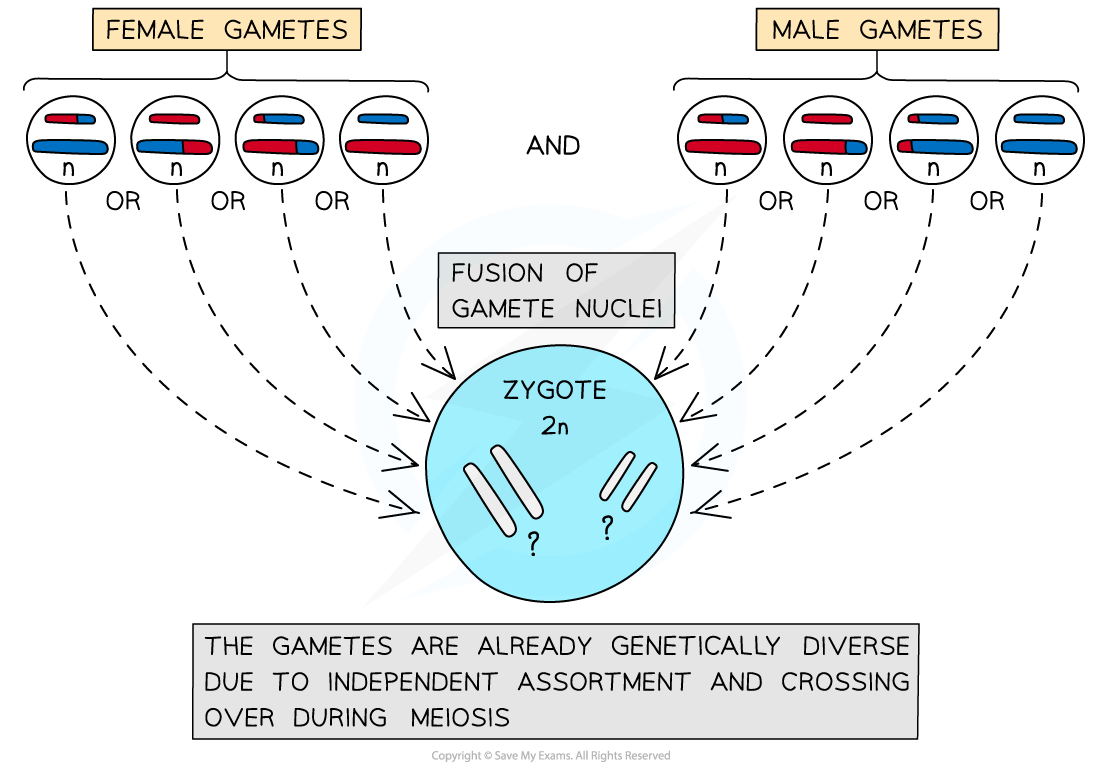
Examiner Tips and Tricks
These sources of genetic variation explain why relatives can differ so much from each other. Even with the same parents, individuals can be genetically unique due to the processes outlined above.

Unlock more, it's free!
Did this page help you?